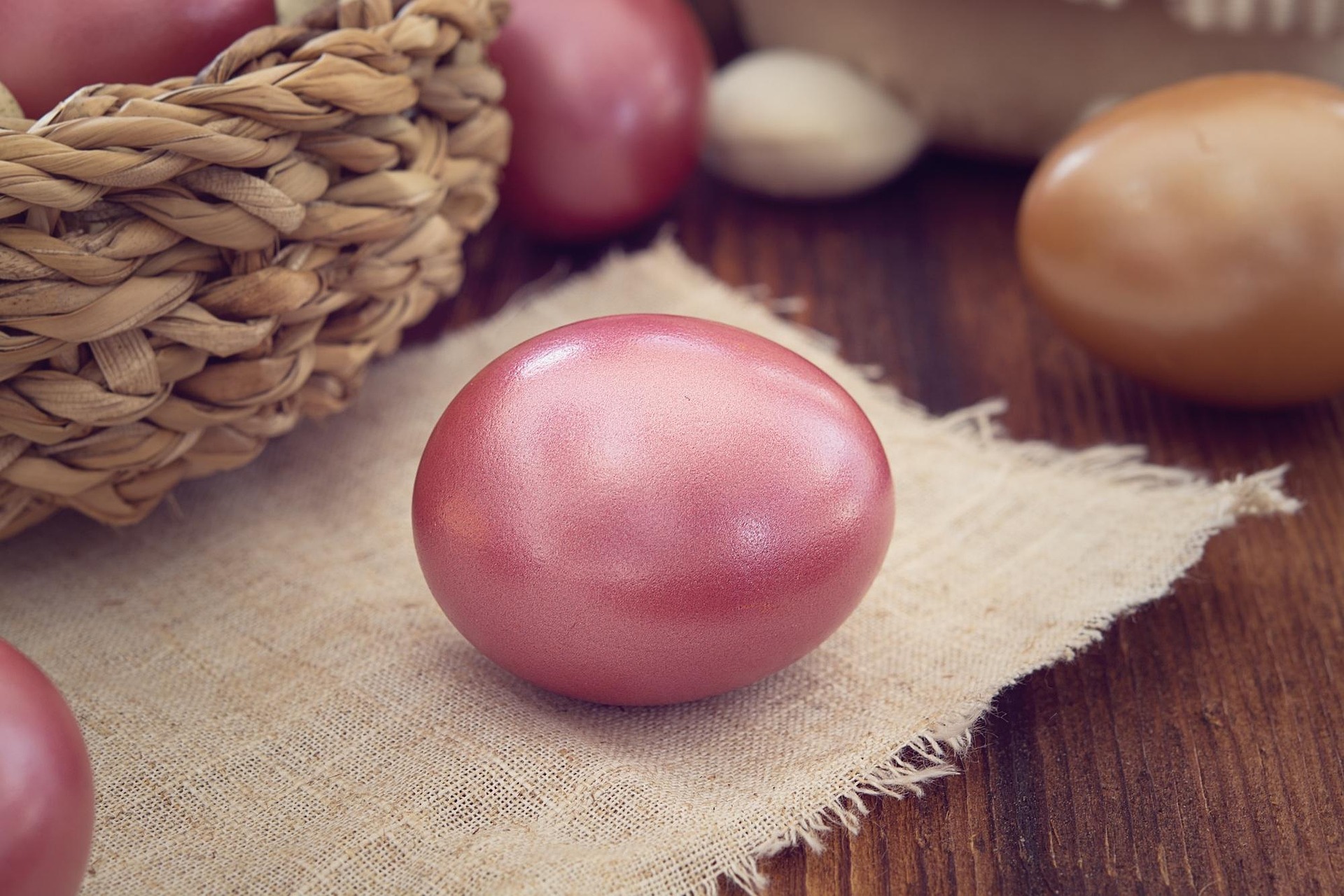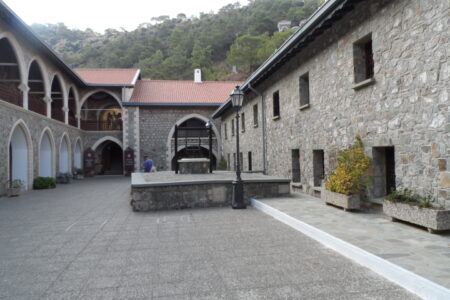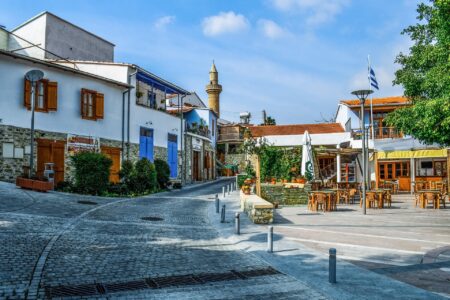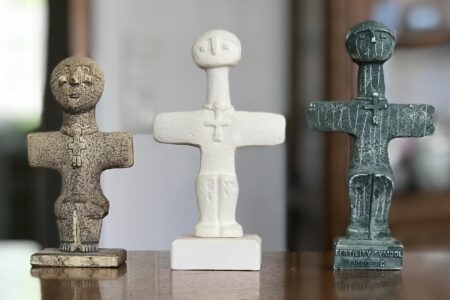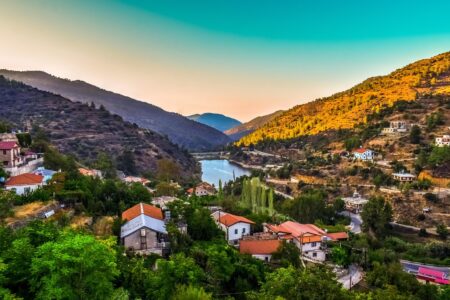In 2025, Easter in Cyprus unfolds over five consecutive public holidays, from Good Friday on 18 April through Holy Tuesday on 22 April. The island’s deeply rooted Orthodox traditions blend with vibrant folk customs and warm island hospitality. From the solemn hymns and Epitaphios processions of Holy Week to family feasts featuring aromatic flounes and slowly roasted lamb, every day offers a unique window into Cypriot spiritual life and seasonal celebration.
Contents
Dates and Public Holidays
Good Friday falls on 18 April, when churches open for an early 07:00 Liturgy of the Presanctified Gifts and close the day with the evening “Burial of Christ” service at around 18:30, followed by the flower‑draped Epitaphios procession at 19:00. Holy Saturday on 19 April is observed in quiet preparation for the midnight Anastasi service, which begins at 23:30 with the lights extinguished at 23:45 to symbolize Christ’s burial, and culminates at 00:00 with the triumphant proclamation “Christ is risen!” Easter Sunday on 20 April fills every cathedral and parish church from 06:00 onwards, with major centers like Saint Lazarus in Larnaca and the Holy Trinity in Nicosia welcoming up to three thousand worshippers per liturgy. Easter Monday on 21 April remains an official public holiday for continued family gatherings, and in 2025 the government has also designated Tuesday 22 April a non‑working day, allowing both locals and visitors to complete their pilgrimages, island excursions, and family visits at a relaxed pace.
Holy Week Liturgies
The week begins with Palm Sunday, when branches of olive and palm are distributed at every divine service and homes are adorned with green fronds. On Holy Monday and Holy Tuesday, special readings recount Christ’s teachings and the washing of the disciples’ feet, while Holy Wednesday features the Sacrament of Holy Unction. Holy Thursday opens with the Hierarchical Divine Liturgy of Saint Basil and closes with the evening Eucharist service, during which believers receive Holy Communion in remembrance of the Last Supper. Each of these days sets the spiritual tone for the sorrowful and reflective remembrance of Christ’s passion.
Good Friday Processions
On Good Friday morning and afternoon, the four Passion Gospels are solemnly chanted in every church, and many parishes distribute blessed kolyva—a sweet wheat and honey dish—in memory of the fallen. At sunset, the Epitaphios—an ornate bier representing Christ’s tomb—is carried aloft through candlelit streets to the plaintive sounds of Byzantine lamentations. In Limassol, the procession departs Saint Anthony’s Church at 18:15 and winds along the sea promenade, while in mountainous Troodos villages the bier is borne under the open sky along narrow footpaths, evoking a profound sense of communal mourning.
The Midnight Anastasi Service
Holy Saturday’s Anastasi service is the emotional zenith of the Easter celebration. Worshippers gather in darkness at 23:30, and at 23:45 the lights go out completely as the final burial hymns are sung. Precisely at midnight the priest proclaims “Christ is risen!” and the sanctuary bursts into light as the congregation’s candles are rekindled, often from a lamp brought from Jerusalem. The Holy Fire is passed from hand to hand until dawn, accompanied by the triumphant troparion “Great are the accomplishments of faith…” Before dispersing, families exchange red‑dyed eggs to symbolize new life and invite friends and neighbors to their festive tables.
Folk Traditions and Easter Cuisine
By Saturday evening nearly every household has prepared a basket of red eggs, dyed in natural onion‑skin, oak bark or seaweed infusions to achieve a deep ruby hue. The friendly egg‑tapping game, tsougrisma, begins at midnight: opponents strike eggs “beak to beak” and the one whose egg remains uncracked claims luck for the year and the privilege of first serving guests. Early Easter morning often begins with avgolemono, a soothing soup of olive oil, lemon juice and whisked egg yolks, designed to gently awaken the appetite. The centrepiece of the Easter feast is flounes—thin, round pastries made of flaky dough filled with salty halloumi, mahlepi, fresh mint and raisins—baked at around 200 °C in family‑run bakeries across the island.
Spit‑Roasted Lamb and Culinary Workshops
In rural estates and agrotourism farms, young lambs are marinated in local dry wine, chopped oregano, garlic and honey up to twelve hours before being slowly roasted on a spit over charcoal. Many venues offer hands‑on master classes where visitors learn to knead the dough for flounes, shape the characteristic pastry coils, and turn the lamb until it reaches a golden, caramelized finish. These experiences pair food preparation with storytelling, connecting participants to centuries‑old island traditions.
Regional Highlights
In the Troodos mountains at dusk on Holy Saturday, youth gather to light towering bonfires—λαμπρατζιά—up to four metres high. Around the fires they sing folk songs and dance, then ceremonially burn a symbolic Judas effigy to celebrate the triumph of good over evil. On Easter Monday the Limassol seafront hosts a free Old Skete Band concert, blending modern remixes of Byzantine chants with contemporary beats, while festive stalls sell honeyed cookies and the famed Commandaria dessert wine. In Paphos on 22 April, the “Easter Colours” children’s festival invites youngsters to egg‑painting workshops, folk‑craft stations and guided dance lessons under the supervision of professional animators.
Practical Travel Tips
To attend services in Larnaca before catching the Troodos bonfire, plan transport carefully: public buses run less frequently on holiday days and taxis surge in price. Book accommodation or agrotourism stays two to three months in advance, especially around 17–22 April in Limassol and Paphos. Night services can last until 02:30 AM, and mountain temperatures may drop to +8 °C in April, so pack a flashlight, warm layers and sturdy shoes for walking on ancient cobblestones. A camera is essential—every candlelit procession, bonfire and family feast deserves to be preserved in a photograph.
Easter 2025 in Cyprus promises an unforgettable journey through Orthodox devotion, living folk culture and genuine island hospitality—a celebration of faith, renewal and community that lingers long after the last ember of the bonfire fades.

